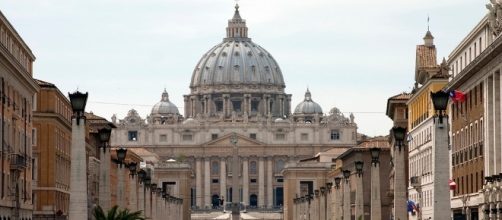The Vatican City is officially the smallest nation in the world. It can be easily covered on foot in under one hour, it has a birth rate of zero and is completed enclaved by Rome, Italy.
Despite these apparent geographical and social hindrances, the Vatican City is home to the world renowned St Peter's Basilica - the illustrious domed building which is the largest church in the world and took 120 years to complete. Also located within the Vatican City is the Sistine Chapel where you will find Michelangelo's The Creation of Adam fresco (the one in which God and Adam are nearly touching fingertips).
A tiny colossus
It could, therefore, be said that the Vatican City punches above its weight in terms of what it has to offer. This 109-acre minuscule microstate is even a Unesco World Heritage Site itself - an impressive quirk for a sovereign state.
Oddly, Benito Mussolini is the one to credit for the formation of this geographical peculiarity. It was his pact with Pope Pius XI which settled a decade's old dispute over who had the legitimacy to rule in Rome - the Pope or the Italian King. The need to settle the 'Roman question' officially established the Vatican City as an independent nation-state in 1929.
The unorthodox City
The archaic Vatican walls - which have provided centuries of protection for previous Popes - surround the country.
However, the transition into surrounding Rome is almost seamless - unlike other places. It is a privilege to leave behind a nation brimming with history, architecture and religious significance to then enter into another equally influential and intriguing place.
It is for this reason that the Vatican City is unorthodox. It is, in terms of territory, tiny yet it is a giant due to the buildings, artefacts and artworks that it houses. The porous border allows unhindered passage to Rome yet it is forever distinct from the 'Eternal City'. As a nation, the Vatican City is young despite it being packed with wonders dating back centuries. A 2015 estimate puts the population at 1,000, yet the Economist predicts that as many as 25,000 people can pass through in a single day.
This monumental influx of visitors is evident when observing the queue to enter the Vatican Museum which can take well over 2 hours of waiting.
The world's smallest nation, the centre of authority for an entire religious branch and a UNESCO World Heritage Site, the uniqueness of the Vatican City is plain to see.


